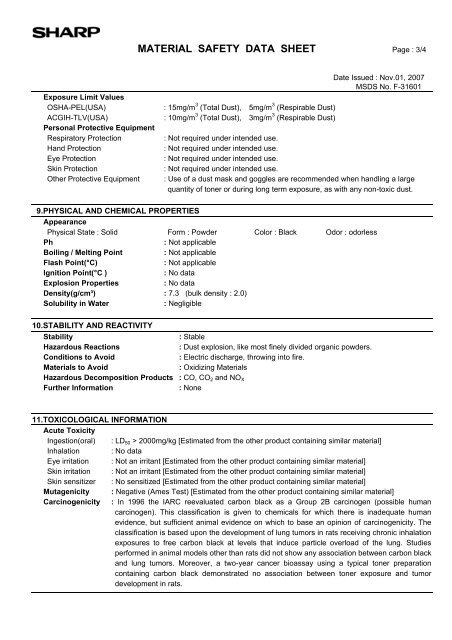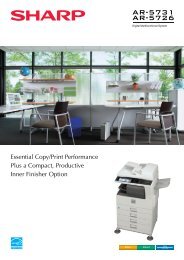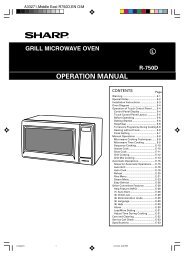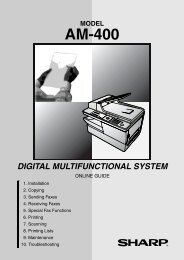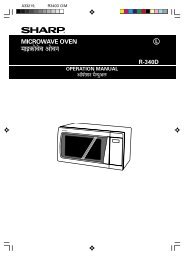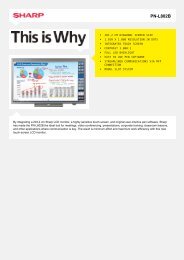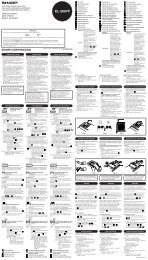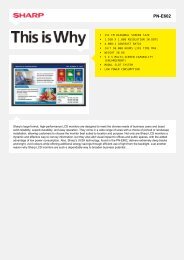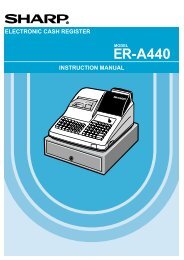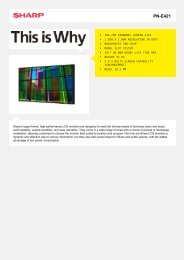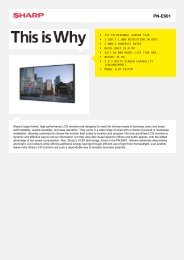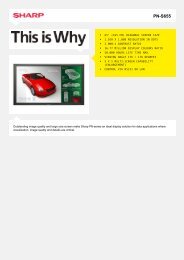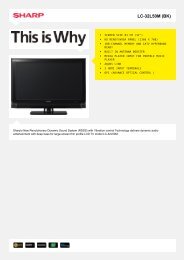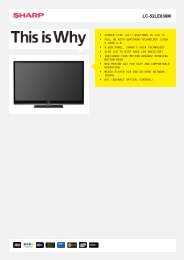Create successful ePaper yourself
Turn your PDF publications into a flip-book with our unique Google optimized e-Paper software.
MATERIAL SAFETY DATA SHEET Page : 3/4<br />
Exposure Limit Values<br />
OSHA-PEL(USA)<br />
ACGIH-TLV(USA)<br />
Personal Protective Equipment<br />
Respiratory Protection<br />
Hand Protection<br />
Eye Protection<br />
Skin Protection<br />
Other Protective Equipment<br />
: 15mg/m 3 (Total Dust), 5mg/m 3 (Respirable Dust)<br />
: 10mg/m 3 (Total Dust), 3mg/m 3 (Respirable Dust)<br />
Date Issued : Nov.01, 2007<br />
MSDS No. F-31601<br />
: Not required under intended use.<br />
: Not required under intended use.<br />
: Not required under intended use.<br />
: Not required under intended use.<br />
: Use of a dust mask and goggles are recommended when handling a large<br />
quantity of toner or during long term exposure, as with any non-toxic dust.<br />
9.PHYSICAL AND CHEMICAL PROPERTIES<br />
Appearance<br />
Physical State : Solid Form : Powder Color : Black Odor : odorless<br />
Ph<br />
: Not applicable<br />
Boiling / Melting Point<br />
: Not applicable<br />
Flash Point(°C)<br />
: Not applicable<br />
lgnition Point(°C )<br />
: No data<br />
Explosion Properties<br />
: No data<br />
Density(g/cm³) : 7.3 (bulk density : 2.0)<br />
Solubility in Water<br />
: Negligible<br />
10.STABILITY AND REACTIVITY<br />
Stability<br />
: Stable<br />
Hazardous Reactions<br />
: Dust explosion, like most finely divided organic powders.<br />
Conditions to Avoid<br />
: Electric discharge, throwing into fire.<br />
Materials to Avoid<br />
: Oxidizing Materials<br />
Hazardous Decomposition Products : CO, CO 2 and NO X<br />
Further Information<br />
: None<br />
11.TOXICOLOGICAL INFORMATION<br />
Acute Toxicity<br />
Ingestion(oral) : LD 50 > 2000mg/kg [Estimated from the other product containing similar material]<br />
Inhalation : No data<br />
Eye irritation : Not an irritant [Estimated from the other product containing similar material]<br />
Skin irritation : Not an irritant [Estimated from the other product containing similar material]<br />
Skin sensitizer : No sensitized [Estimated from the other product containing similar material]<br />
Mutagenicity : Negative (Ames Test) [Estimated from the other product containing similar material]<br />
Carcinogenicity : In 1996 the I<strong>AR</strong>C reevaluated carbon black as a Group 2B carcinogen (possible human<br />
carcinogen). This classification is given to chemicals for which there is inadequate human<br />
evidence, but sufficient animal evidence on which to base an opinion of carcinogenicity. The<br />
classification is based upon the development of lung tumors in rats receiving chronic inhalation<br />
exposures to free carbon black at levels that induce particle overload of the lung. Studies<br />
performed in animal models other than rats did not show any association between carbon black<br />
and lung tumors. Moreover, a two-year cancer bioassay using a typical toner preparation<br />
containing carbon black demonstrated no association between toner exposure and tumor<br />
development in rats.


